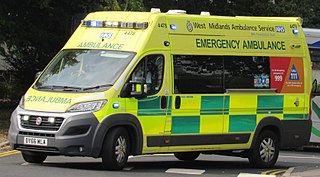
An ambulance is a medically equipped vehicle which transports patients to treatment facilities, such as hospitals. Typically, out-of-hospital medical care is provided to the patient during the transport.

The Great North Air Ambulance Service (GNAAS) is a registered charity and air ambulance based in the United Kingdom. It operates a dedicated helicopter emergency service for the North of England with three aircraft. It serves North Yorkshire, the North-East, Cumbria, the Scottish borders and the Isle of Man.
London's Air Ambulance Charity is a registered charity that operates a helicopter emergency medical service (HEMS) dedicated to responding to serious trauma emergencies in and around London. Using a helicopter from 08:00 to sunset and rapid response vehicles by night, the service performs advanced medical interventions at the scene of the incident in life-threatening, time-critical situations.
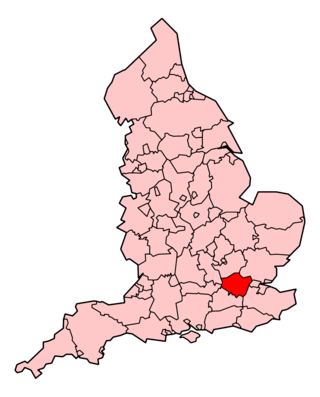
The London Ambulance Service NHS Trust (LAS) is an NHS trust responsible for operating ambulances and answering and responding to urgent and emergency medical situations within the London region of England. The service responds to 999 phone calls across the region, and 111 phone calls from certain parts, providing triage and advice to enable an appropriate level of response.
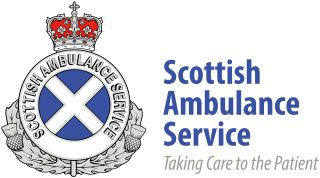
The Scottish Ambulance Service is part of NHS Scotland, which serves all of Scotland's population. The Scottish Ambulance Service is governed by a special health board and is funded directly by the Health and Social Care Directorates of the Scottish Government.

The North West Ambulance Service NHS Trust (NWAS) is the ambulance service for North West England. It is one of ten ambulance trusts providing England with Emergency medical services, and is part of the National Health Service, receiving direct government funding for its role.

The South Western Ambulance Service NHS Foundation Trust (SWASFT) is the organisation responsible for providing ambulance services for the National Health Service (NHS) across South West England. It serves the council areas of Bath and North East Somerset, Bournemouth, Christchurch and Poole Council, Bristol, Cornwall, Devon, Dorset, Gloucestershire, North Somerset, Plymouth, Isles of Scilly, Somerset, South Gloucestershire, Swindon, Torbay and Wiltshire.

Yorkshire Ambulance Service NHS Trust ("YAS") is the NHS ambulance service covering most of Yorkshire in England. It is one of ten NHS Ambulance Trusts providing England with emergency medical services as part of the National Health Service it receives direct government funding for its role.

The East of England Ambulance Service NHS Trust (EEAST) is an NHS trust responsible for providing National Health Service (NHS) ambulance services in the counties of Bedfordshire, Cambridgeshire, Essex, Hertfordshire, Norfolk and Suffolk, in the East of England region. These consist of approximately 6.2 million people across an area of 7,500 square miles (19,000 km2).

The Great Western Ambulance Service NHS Trust (GWAS) was a National Health Service (NHS) trust which provided emergency and non-emergency patient transport services to Bath and North East Somerset, Bristol, Gloucestershire, North Somerset, Swindon and Wiltshire, in South West England. It was formed on 1 April 2006 by the merger of the Avon, Gloucestershire and Wiltshire ambulance services. The ambulance service was acquired by neighbouring Foundation Trust South Western Ambulance Service (SWASFT) on 1 February 2013.
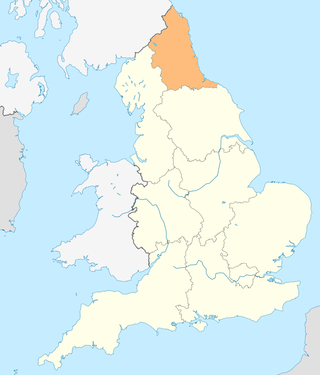
The North East Ambulance Service NHS Foundation Trust (NEAS) is an NHS foundation trust responsible for providing NHS ambulance services in North East England. Headquartered in Newcastle upon Tyne, NEAS provides emergency medical services to the metropolitan boroughs of Newcastle upon Tyne, Gateshead, North Tyneside, South Tyneside and City of Sunderland; the ceremonial counties of County Durham and Northumberland; and the area of North Yorkshire commonly known as Teesside. NEAS was formed on 1 July 2006, following the merger of the existing North East Ambulance Service with the Tees division of the Tees, East and North Yorkshire Ambulance Service (TENYAS). Northumbria Ambulance Service and County Durham Ambulance Service had previously merged on 1 April 1999.

The West Midlands Ambulance Service University NHS Foundation Trust (WMAS) is responsible for providing NHS ambulance services within the West Midlands region of England. It is one of ten ambulance trusts providing England with emergency medical services, and is part of the National Health Service.

Emergency medical services in the United Kingdom provide emergency care to people with acute illness or injury and are predominantly provided free at the point of use by the four National Health Services (NHS) of England, Scotland, Wales, and Northern Ireland. Emergency care including ambulance and emergency department treatment is only free to UK residents and a charge may be made to those not entitled to free NHS care.

Emergency medical personnel in the United Kingdom are people engaged in the provision of emergency medical services. This includes paramedics, emergency medical technicians and emergency care assistants. 'Paramedic' is a protected title, strictly regulated by the Health and Care Professions Council, although there is tendency for the public to use this term when referring to any member of ambulance staff.
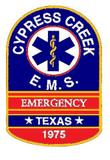
Cypress Creek Emergency Medical ServicesAssociation, also known as Cypress Creek EMS (CCEMS) was a private, non-profit emergency medical service provider for Harris County ESD 11 in North Harris County, within greater Houston, Texas. In 2021, CCEMS declared bankruptcy and operations ceased in mid 2022. In late 2022, the remaining assets, branding, and trademarks were bought by Viking Enterprises, DBA City Ambulance Service. All ambulances in use by CCEMS are Mobile Intensive Care Units (MICU), with at least one Paramedic, making all ambulances ALS units. Cypress Creek EMS provided 911 service in North Harris County, provided bicycle medic teams for special events, provided tactical EMS support for federal, state, and local law enforcement, and operated an accredited educational institution.

The British Association for Immediate Care (BASICS) is an organisation which has the stated aim to encourage and aid the formation and extension of immediate care schemes. The British Association for Immediate Care was founded as a charity in 1977 and combines bringing people together who have an interest in pre-hospital immediate care with supporting and promoting regional and local immediate care schemes across the UK.

The East Anglian Air Ambulance (EAAA) is an air ambulance providing Helicopter Emergency Medical Services (HEMS) across the English counties of Norfolk, Suffolk, Cambridgeshire and Bedfordshire. The appeal to fund the service was launched in the summer of 2000 by top jockey Frankie Dettori, who had been a casualty in a serious plane crash a couple of months earlier. When flying commenced in January 2001, the service was initially available only one day a week. The East Anglian Air Ambulance operates two helicopters, 365 days a year, from its bases at Cambridge Airport and Norwich Airport, covering over 5,000 square miles (13,000 km2) and a population of approximately 3.5 million.
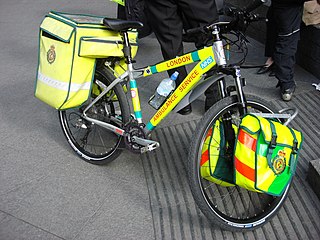
A cycle responder is a medically trained responder, such as a paramedic or first aider that uses a bicycle to respond to a medical emergency. They are used by professional ambulance services to respond to emergency calls and also by private and voluntary providers of medical cover at events.

A motorcycle ambulance is a type of emergency response vehicle which carries either a solo paramedic, emergency medical technician, or first responder to a patient; or may also be used with a trailer or sidecar for transporting patients. Because of its small size and agile performance, a motorcycle ambulance is able to respond to a medical emergency much faster than a car or conventional ambulance vehicle in heavy traffic, which can increase survival rates for critically ill patients, especially those in cardiac arrest.
The Hazardous Area Response Team (HART) is a capability of the NHS ambulance services in the United Kingdom devoted to providing paramedic and enhanced medical care to patients in the "hot zone" of hazardous environments.


















